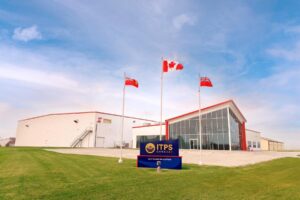ITPS provides EASA CAT-1, FCL.820-compliant test pilot (experimental) and lead flight test engineer courses, available for fixed wing (Part 23 or 25) and rotary wing (Part 27 or 29).
A Variable Stability In-Flight Simulator is used in the curriculum.
Designed for civil pilots and engineers who upon graduation will be employed in experimental flight tests, this course is accredited by the Society of Flight Test Engineers (SFTE). Topics include:
- Aircraft Performance Flight Tests
- Aircraft Flight Control System assessment and testing
- Digital Flight Control Systems design and certification
- Aircraft Flying Qualities testing
- Avionics and Human Machine Interface testing
- Aircraft Powerplant and Systems testing
- Aircraft Structures and Loads testing
Start dates: January and June annually
The new facility features a 27,000 sq.ft. hangar, big enough to house ITPS’s expanding fleet of aircraft. The administration and classroom building have been extended by 15,000 square feet and feature six additional classrooms, a simulator centre, a state of the art Telemetry Room, additional student facilities and change rooms. The new building features additional briefing rooms, a flight crew ready room and much enlarged canteen area.

CYXU is a modern regional airport 5 nm north east of the city of London, Ontario. The airport is an international gateway airport with direct flights from Chicago and Detroit and Immigration and Customs facilities. It is as of 2009 the 20th busiest airport in Canada, which makes for efficient school operations with little to no delays due to traffic. The airport is south of Toronto and outside the Toronto (CYYZ) FIR and has close access to large sections of Class E and G airspace minimizing transit times for the execution of flight exercises which can be flown up to FL180 on a VFR flight plan but are Controlled VFR (CVFR) with flight control by Toronto Center above 12000 feet. Two dedicated test areas Delta and Juliet a low altitude one to 12000 and a high altitude one over Lake Huron, up to FL350, north west of London may be used by the school under an agreement with NAV Canada, the Canadian Air Traffic Control Authority. The school therefore enjoys a very favourable air traffic environment for its training operations.





